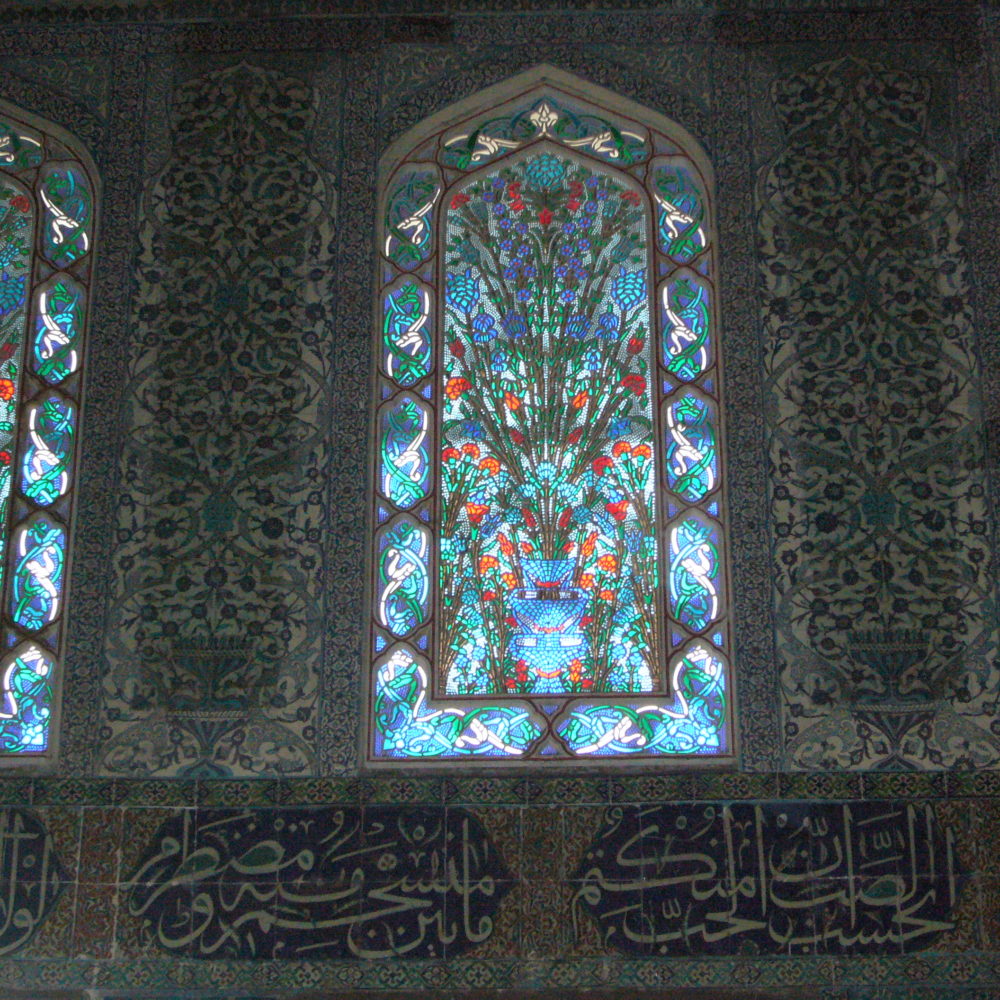I’ve visited Istanbul regularly for years now, and it gets better each time.
Gone is the Turkish lire with its denominations of tens of millions that made computing the dollar equivalency maddening. The city is cleaner than I’ve ever seen it, perhaps reflecting the growing economy and strong stock market of the past few years. And the growth in luxury hotels—we stayed at the Ciragan Palace, a Kempinski hotel with the most elaborate and well-presented breakfast buffet I’ve ever seen anywhere–signifies Istanbul’s place as a world-class city accustomed to welcoming business travelers.
Frankly, we expected Istanbul to be a more difficult shoot than it was. The crew and I were welcomed at almost every commercial establishment, unlike some countries where the site of a television camera causes merchants and restaurateurs to shoo us away. And while our “fixer,” tour guide Mehmet Cemil (he goes by Cemil, pronounced “Ja-meel”) Kuran, had to do some sweet talking now and then to obtain permission for us to shoot in mosques, we were welcomed into religious sites graciously.
Our goal in the Istanbul show: communicate the excitement of the city, the kindness of its residents, and the array of sites that make the city a great destination for travelers.
Rudy’s Travel Tips
- Traffic in Istanbul can be maddening, so try to keep your sightseeing confined to one area or neighborhood in a day. Istanbul is a great walking city, and you can easily spend two days roaming Sultanahmet, the old neighborhood, where the Topkapi Palace, the Grand Bazaar, the Aya Sofia (“Hagia Sophia” in Greek), and the Blue Mosque are centered. For a great local lunch, find the Havuzlu restaurant in the Grand Bazaar—it’s near the jewelry section of the market, but any merchant can point you toward it. (Note: It’s closed on Sunday.) For a posh lunch, the courtyard of the nearby Four Seasons Hotel, a former prison turned into a luxury hostelry, is very nice.
- Taxis aren’t expensive, but traffic jams make using the subway, trams and ferries the best choice.
- For more modern shopping, the pedestrian street called Istiklal Street in the Beyoglu neighborhood, is the place to go, with its warren of tiny neighborhood streets lined with small eateries. English is widely spoken.
- Five-star hotel rooms are expensive in Istanbul, though still much cheaper than in, say, New York, London or Tokyo. Rooms at the chic W Istanbul started at $500 a night when the hotel opened in the early summer of 2008. But, then again, you can check into the very nice Ayasofya Mansions a hotel of nine wooden houses (with 64 rooms) on a cobblestone street adjacent to the Topkapi Palace and expect to pay (at 2008 prices) 135 euros for a double room without a view, 160 euros for a room with a view.
- Best time to visit Istanbul? If you want mild weather and small crowds, May and mid to late September are ideal. I’ve, however, visited in the dead of winter and had a great time. There are no lines at popular sights, and there’s rarely a heavy snow.
- I don’t hesitate to eat salads and fruits almost anywhere in Istanbul. The Mediterranean diet may be slightly repetitive—lots of vegetables and greens—but it’s darn good for you and made tasty with spices. Those small plates of hot and cold appetizers are called mezes, and you can order an assortment. Shish kabob is ubiquitous, and my favorite restaurant for a grand dinner overlooking the Bosporus is Hamdi, a major eatery that began as a kabob stand in a parking lot. It’s very near the Spice Market.
- I’m convinced everyone in Turkey either wants to either sell you a carpet or wants to guide you to someone who wants to sell you a carpet. This is not a bad thing, as the country overflows with gorgeous carpets. Sometimes well-dressed and well-spoken strangers will come up to you in tourist areas to ask where you’re from. It almost always turns out he has a “cousin” attending a college near your hometown. But it won’t take long for this question to come up: “Are you interested in visiting a most interesting carpet shop?” On one visit, I got so accustomed to being approached, I smiled at the fourth solicitor and, before he could shift into his pitch, asked, “I really need some help. Is there anywhere on Istanbul I can buy a carpet?” At first his face lit up with expectation, but it only took a second before he broke into a big smile and appreciated the joke.
- The Grand Bazaar, or Kapali Carsi, is a must-see. Built by the 15th-century leader of the Ottoman Turks, Mehmet the Conqueror, the market holds more than 4,000 shops and two mosques spread over 40 streets. It’s brightly lit and lively, and I was surprised on this visit to find flat-screen television monitors mounted on the ceiling of major hallways to tout sales and news. If you really want to do serious shopping, you might want to hire a professional shopper to accompany you. In our show, we used Kathy Hamilton, an American who married a Turkish rug merchant and now lives in Istanbul with her husband and son. Feel free to tell her, “Rudy sent me.”
- My father used to accuse me of being “a whirling dervish,” but I had no idea the cultural history behind the phrase. In fact, the Whirling Dervishes is a Suffi order that follows the teachings of a mystic poet, Rumi. He attempted to reunite the soul with the divine through an almost hypnotic dance in which red-capped men in snow-white skirts whirl in unison. You can catch a performance by the Rumi Mevlevi Music and Sema Ensemble Association at the Sirkeci Train Station right in downtown Istanbul every Monday and Thursday. There are other performances elsewhere. Click Here.
- In addition to buying a carpet, there’s one other thing I do every time I’m in Istanbul. I go toCemberlitas Hamami the great Turkish bathhouse built in 1584 (really) and designed by one of Istanbul’s most famous architects, Mimar Sinan. (Don’t miss his small, exquisite mosque, Rustem Pasa, a few steps behind the Spice Market.) Go in the morning to the bath, as it gets quite crowded in late afternoon and evening. There’s a separate chamber for men and women, and the centerpiece is the enormous, round, white marble platform in the men’s bathing area that is heated from below. There, you’ll be scrubbed down with soapy water by burly attendants whose goal is to get your circulation going. Just relax and enjoy. If you’re visiting Istanbul when it’s cold, this is a great place to get nice and warm and relaxed.
- While walking through the aromatic Spice Market, you’ll be offered tasting samples of things like pistachios. Don’t hesitate to indulge—there’s no obligation to buy. I’d take a pass on “Turkish Viagra.” You may find a couple of merchants selling leeches. Some people believe there are health benefits to applying leeches, but in the interest of not repulsing tourists, leeches can no longer be actually used in the market. I bought several in a bottle intending to try them out on my arm later—Sue McNally, my twisted producer who likes to torture me, wanted to make a YouTube video of the process. But I could never get the little buggers to affix to my flesh. I think I carried them around too long in that plastic bottle filled with water, and they were exhausted from sloshing around by the time we had a moment to try the process.







